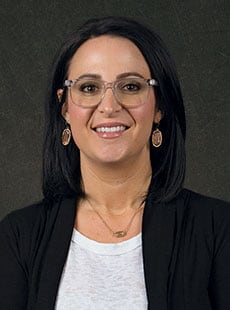 Course Introduction
Course Introduction
Core Standards of the Course
Strand 1
Student will participate in personal and leadership development activities through SkillsUSA or another appropriate career and technical student organization.
Standard 1
Student will use communication skills to effectively communicate with others.
-
Understand when it is appropriate to listen and to speak.
-
Understand and follow verbal and written instructions for classroom and laboratory activities.
Standard 2
Student will effectively use teamwork to respectfully work with others.
Standard 3
Student will use critical thinking and problem-solving skills
-
Analyze the cause of the problem.
-
Develop a solution to address the problem.
-
Implement the plan.
-
Evaluate the effectiveness of the plan.
Standard 4
Student will be dependable, reliable, steady, trustworthy, and consistent in performance and behavior.
-
Set and meet goals on attendance and punctuality.
-
Prioritize, plan, and manage work to complete assignments and projects on time.
Standard 5
Student will be accountable for results.
-
Use an achievement chart for activities and behaviors in class that encourages a personal evaluation of classroom performance.
-
File a regular written report on progress toward completion of assignments and projects.
Standard 6
Be familiar with the legal requirements and expectations of the course.
-
Be familiar with the course disclosure statement and all requirements for successful completion of the course.
-
Demonstrate workplace ethics, e.g. fair, honest, disciplined.
Strand 2
Student will participate in work-place readiness activities.
Standard 1
Student will demonstrate employability skills.
-
Use a career search network to find career choices.
-
Write a resume including a list of demonstrated skills.
-
Write a letter of application.
-
Complete a job application.
-
Participate in an actual or simulated job interview.
Standard 2
Student will participate in a work-based learning experience outside the classroom.
Strand 3
Students will be able to understand safe practices and professional machine shop procedures.
Standard 1
Follow safety manuals and all safety regulations and requirements.
Standard 2
Use PPE (personal protective equipment) and protective shields.
-
Wear PPE as recommended by OSHA, UOSHA, and the Utah State Risk Management Office.
-
Maintain and use appropriate protective guards and equipment on machinery.
Standard 3
Follow safe operating procedures for hand and power machine tools.
-
Identify and understand safe machine operating procedures.
-
Demonstrate safe machine operations at all times.
Standard 4
Maintain a clean and safe work environment.
-
Keep work areas clean.
-
Clean machine and hand tools when work is completed.
-
Put tools away when work is finished.
-
Keep aisles clear of equipment and materials.
-
Perform preventive maintenance as required.
-
Understand chemical hazards and the use of Material Safety Data Sheets (MSDS).
-
Keep storage rooms well organized and free of clutter.
Standard 5
Each student should earn a score of 100% on a required safety exam relating to general shop safety and each machine tool he/she will be operating.
Strand 4
Students will be able to apply mathematical concepts.
Standard 1
Perform basic arithmetic functions:
-
Add, subtract, multiply, and divide whole numbers.
-
Add, subtract, multiply, and divide fractions.
-
Add, subtract, multiply, and divide decimals.
Standard 2
Convert fractions to decimal equivalents.
-
Convert fractions to decimal equivalents.
-
Convert decimal values to nearest fractional equivalent.
-
Use Decimal Equivalent Chart for conversions.
Standard 3
Calculate speeds and feeds for machining.
Standard 4
Locate basic machining points from a Datum Point.
-
Identify points using the Cartesian coordinate system.
-
Identify points using the absolute dimensioning system.
-
Identify points using the incremental dimensioning system.
Strand 5
Students will be able to interpret engineering drawings and control documents.
Standard 1
Identify basic layout of drawings.
Standard 2
Identify basic types of drawings.
-
Identify orthographic views.
-
Identify positions of views (top, front, side, and auxiliary).
-
Identify and describe the purpose of orthographic (three views) drawings.
-
Identify and describe the purpose of isometric drawings.
-
Identify and describe the purpose of exploded isometric drawings.
-
Identify and describe the purpose of assembly drawings.
-
Determine the scale of the view or section.
-
Check for revisions, and describe current specifications.
-
Recognize out-of-date blueprints, and know appropriate related procedures.
Strand 6
Students will be able to properly perform measurement/inspection.
Standard 1
Select proper measurement tools as they best relate to part characteristics and specified accuracy.
-
Discuss how measurement tool selection can contribute to part accuracy/inaccuracy.
-
Demonstrate proper manipulation and care of precision measuring tools.
Standard 2
Apply proper measuring techniques.
-
Discuss factors affecting accurate measurement (dirt, temperature, improper measuring, tool calibration etc).
-
Demonstrate how to check calibration of various precision instruments.
Standard 3
Accurately perform measurements with hand-held instruments.
-
Read a tape measure to 1/16".
-
Read a micrometer to .001".
-
Read a steel rule.
-
Read a dial/digital caliper to .001".
Strand 7
Students will be able to understand planning, hand tools, and recognize different manufacturing materials and processes.
Standard 1
Prepare and plan for machining operations.
Standard 2
Demonstrate proper use of hand tools.
-
Select the most appropriate hand file and properly demonstrate its use.
-
Correctly, identify and use hand taps.
-
Demonstrate the proper use of thread-cutting dies.
-
Identify common hand tools and describe their basic applications.
Standard 3
Identify common materials and explain basic properties.
-
Discuss the classification systems for metals.
-
Describe general characteristics for carbon steels, tool steels, stainless steels, structural steels, cast irons, aluminum, and other commonly used metals.
Strand 8
Students will be able to understand and demonstrate the use of drilling and grinding machines and band saws.
Standard 1
Demonstrate proper use of grinding abrasive machines.
-
Identify common types of grinding machines and discuss the major differences and applications.
-
Discuss the variety and describe the proper selection and application of grinding fluids.
-
Demonstrate the proper use and care of bench and pedestal grinders.
Standard 2
Demonstrate the proper use of band saws.
Strand 9
Students will be able to understand and demonstrate the use of milling machines.
Standard 1
Demonstrate proper use of a vertical milling machine.
-
Demonstrate the proper setup, operation, care, cleaning, and lubrication of the vertical mill.
-
Correctly identify common cutters and explain their basic applications.
-
Identify and demonstrate the proper use of all controls and adjustments on the vertical milling machine.
-
Properly set up the milling machine and demonstrate the use of an edge finder. Locate a point within .001"
-
Select the proper cutter and work holding device, demonstrate their proper installation and setup to machine a part. (This may include end mills, flycutter, etc.)
-
Having properly installed a drill chuck and an appropriate work holding device, demonstrate how to locate and drill a hole.
-
Demonstrate the ability to use the Machinery Handbook as a reference for milling.
Strand 10
Students will be able to understand and demonstrate the use of metal lathes.
Standard 1
Demonstrate proper use of metal lathes.
-
Demonstrate the proper cleaning, lubrication, and care of the metal lathe.
-
Identify common parts and demonstrate the proper use of basic controls and adjustments on the engine lathe.
-
Identify and demonstrate the proper installation and application of standard tools and tool holders for the lathe.
-
Identify common chucks and demonstrate proper procedure for changing and installing them.
-
Demonstrate proper procedure for facing one end of a part.
-
Demonstrate proper setup and procedure for center drilling parts.
-
Demonstrate proper setup and procedure while drilling a hole.
-
Demonstrate proper setup and technique for power tapping a through hole on a metal cutting lathe.
-
Demonstrate proper setup and procedure for turning a part to diameter.
-
Demonstrate proper setup and procedure for turning a 90 degree shoulder.
-
Using the compound rest demonstrate the proper setup and procedure for turning a diameter and a taper.
-
Demonstrate proper setup and procedure for turning between centers. (Optional)
-
Demonstrate proper setup and procedure while single point cutting threads to standard pitch diameter and shape specifications.
-
Demonstrate the proper procedure for grinding a HSS cutter bit.
- Use PPE - personal protective equipment.
- Maintain a clean and safe work environment.
- Each student should earn a score of 100% on a required safety exam relating to general shop safety and each machine tool he/she will be operating
- Perform basic arithmetic functions.
- Convert fractions to decimal equivalents.
- Calculate speeds and feeds for machining.
- Locate basic machining points from a Datum Point.
- Identify basic layout of drawings.
- Identify basic types of drawings.
- Select proper measurement tools as they best relate to part characteristics and specified accuracy.
- Apply proper measuring techniques.
- Accurately perform measurements with hand-held instruments.
- Demonstrate proper use of hand tools.
- Demonstrate proper use of grinding abrasive machines.
- Demonstrate proper use of band saws.
- Demonstrate proper use of a vertical milling machine.
- Demonstrate proper use of metal lathes.


 UTAH EDUCATION NETWORK
UTAH EDUCATION NETWORK

 Justin
Justin Braxton
Braxton Dani
Dani Kayla
Kayla Katie
Katie Lora
Lora Rob
Rob Val
Val
